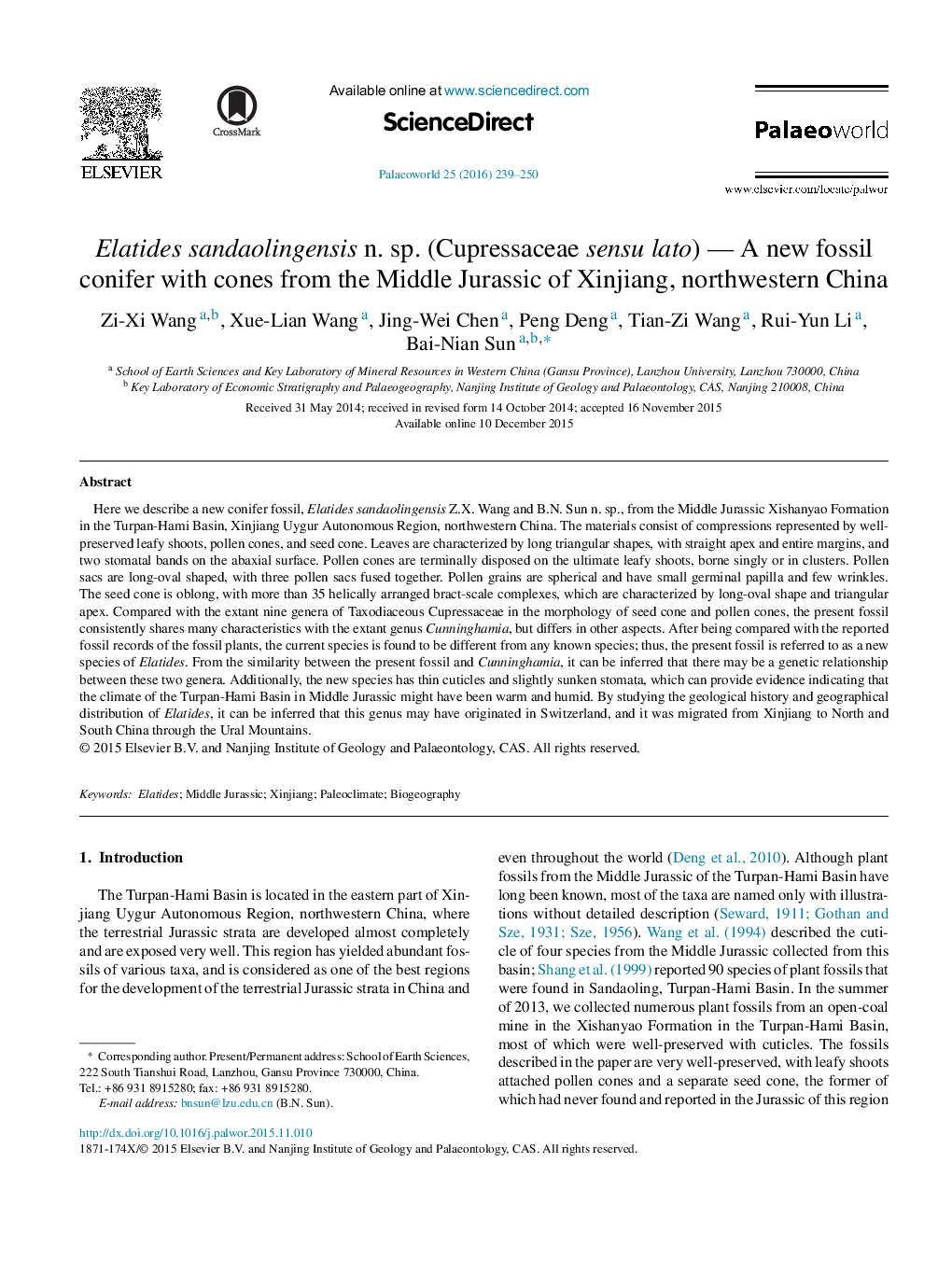| کد مقاله | کد نشریه | سال انتشار | مقاله انگلیسی | نسخه تمام متن |
|---|---|---|---|---|
| 4749649 | 1360606 | 2016 | 12 صفحه PDF | دانلود رایگان |

Here we describe a new conifer fossil, Elatides sandaolingensis Z.X. Wang and B.N. Sun n. sp., from the Middle Jurassic Xishanyao Formation in the Turpan-Hami Basin, Xinjiang Uygur Autonomous Region, northwestern China. The materials consist of compressions represented by well-preserved leafy shoots, pollen cones, and seed cone. Leaves are characterized by long triangular shapes, with straight apex and entire margins, and two stomatal bands on the abaxial surface. Pollen cones are terminally disposed on the ultimate leafy shoots, borne singly or in clusters. Pollen sacs are long-oval shaped, with three pollen sacs fused together. Pollen grains are spherical and have small germinal papilla and few wrinkles. The seed cone is oblong, with more than 35 helically arranged bract-scale complexes, which are characterized by long-oval shape and triangular apex. Compared with the extant nine genera of Taxodiaceous Cupressaceae in the morphology of seed cone and pollen cones, the present fossil consistently shares many characteristics with the extant genus Cunninghamia, but differs in other aspects. After being compared with the reported fossil records of the fossil plants, the current species is found to be different from any known species; thus, the present fossil is referred to as a new species of Elatides. From the similarity between the present fossil and Cunninghamia, it can be inferred that there may be a genetic relationship between these two genera. Additionally, the new species has thin cuticles and slightly sunken stomata, which can provide evidence indicating that the climate of the Turpan-Hami Basin in Middle Jurassic might have been warm and humid. By studying the geological history and geographical distribution of Elatides, it can be inferred that this genus may have originated in Switzerland, and it was migrated from Xinjiang to North and South China through the Ural Mountains.
Journal: Palaeoworld - Volume 25, Issue 2, June 2016, Pages 239–250